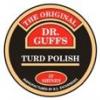The first wave of Japanese riders to contest GPs was in the 1960s, riders such as Takahashi, Suzuki, Morishita and Itoh, raced full seasons. Quite a few other riders came over regularly throughout the season, especially for the TT, After 1967 they disappeared, which I presume was due to the Japanese factories withdrawing from GP racing.
Hideo Kanaya (1972 - 1975) and then Ikujiro Takai (1975) came back over in the 1970s with Yamaha as factory riders, but they only contested the first few GPs of the season before returning to Japan. Kanaya was a contender, rarely out of podium positions and winning GPs and Takai raced the first few GPs of the 1975 season and finished 2nd in the one he finished. The Japanese Kawasaki works riders Wada and Kiyohara also did the same in 1977 when the KR250s were being introduced. They did a few GPs, placing well, then headed back to Japan and were never seen again.
Does anyone know why they didn't, or weren't allowed to, race the full season and go for the championship? They were obviously good enough. I can understand that they were factory test riders, but the riders in the 60s did full seasons and went for the title and presumably were also factory riders/testers.
Note: I am excluding Takazumi Katayama for the discussion as, I think he came across as a privateer first and not as a factory rider, so appears to be different from the others.
Edited by brands77, 14 October 2024 - 13:25.














